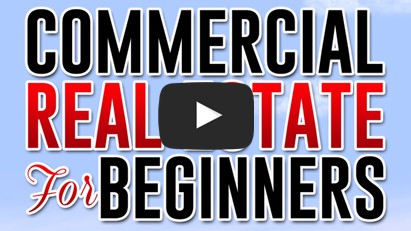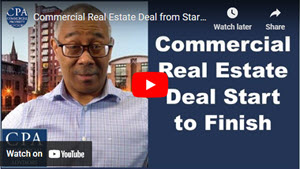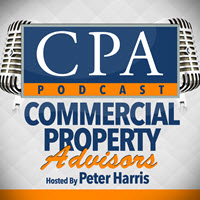
If you are a beginner investor, have limited capital, are risk averse, or are intimidated by the big numbers of commercial property, you can start small with commercial real estate and work towards bigger deals. Many people are surprised to discover that small commercial deals can be extremely profitable. Even more surprising is the fact that there are far more small commercial properties on the market than large ones, giving you plenty of options and opportunities. If the fear of big commercial deals has kept you from investing in commercial real estate, then this is the perfect teaching for you!
What is a Small Commercial Investment Deal?
A small commercial deal is defined in 3 ways:
- An apartment building that consists of five to twenty units.
- A small commercial building no larger than 3,000 square feet. This refers to any commercial property including office and retail space, or single-tenant commercial space.
- A property that you can afford to buy and can envision owning in your current financial situation.
5 Reasons to Start Small in Commercial Real Estate
Reason 1: More Affordable
Small commercial deals are more affordable. A commercial real estate deal usually requires a down payment of around 25%. With a smaller deal that down payment is less which makes it more attainable for beginner investors. Also, a small commercial deal is easier to understand because you are dealing with smaller numbers.
Reason 2: Creative Financing
You are more likely to do something creative with the financing of a small deal because often you are dealing with an individual owner. On a larger commercial property, the ownership is more sophisticated but smaller properties often have owners who are willing to do creative financing like a master lease agreement or the seller carrying second mortgage.
Reason 3: Less Risk
Purchasing a smaller commercial property carries less risk because if you make a mistake you won’t lose as much money as you would on a larger deal.
Reason 4: More Availability
Statistically there are five times more small commercial real estate properties than larger ones. In the U.S. there are about 450,000 apartment buildings between the range of 5-20 units. That number goes down to 95,000 for buildings with 20 to 100 units. That’s a significant difference in availability.
Reason 5: It Makes Sense to You
The final reason why you should consider starting small in commercial real estate investing is because it makes sense to you. Wherever you are in life, it just makes sense for you to start with a smaller property.
4 Small Deal Investment Strategies
1. Conventional Deal
The first strategy is to go through the conventional bank process. An example of how this process works comes from one of my students who purchased a six-unit property using a conventional bank loan. The property had a cashflow of $15,000 a year. However, after looking at some local rent surveys, we discovered that the rents could be raised if we did a little maintenance on the property. So, my student painted and cleaned up the property, increased the rent, and the cashflow increased to $24,000 a year. As the NOI goes up, so does the property value, so after a year she sold the property and made an $80,000 profit. She purchased another six-unit property next door and repeated the entire process again.
Her strategy is to buy, fix, and sell commercial properties, building up her capital base for larger property purchases. Currently she is progressing to a 40-unit apartment building. To learn more on this investment strategy and how conventional bank loans work, watch my video called Apartment Loans 101.
2. Creative Deal
The second option is to use creative financing such as a Master Lease Agreement. This is one of my favorite techniques in creative real estate. In one of my deals, I purchased a seven-unit apartment with 15% down and a three-year master lease agreement seller financing. It only took me a little over a year to get out of the master lease and qualify for a permanent loan. I held onto the apartment for 12 years and just sold it a few years ago.
3. Wholesale Deal
This strategy is great if you don’t have enough money for a down payment. One of my students who is a nurse by profession, had zero experience in real estate and limited funds. This meant that wholesaling a deal was a great solution for her. We taught her how to find an off-market property and at the same time, find a buyer. She networked, located an off-market deal, found a buyer, and then flipped the contract to the buyer to make a $26,000 profit at closing. Although this is not ownership of commercial real estate it is a good way to create capital to then invest in a property.
4. Opportunistic Deal
Buying a distressed property is an opportunistic deal and is not for everyone. However, it is an opportunity to make a decent amount of money on small properties. I have a student example of how this can work. My student purchased a five-unit distressed property with a lot of potential. Because all five units needed rehab, he had to pay all-cash, which was $160,000. At closing, the bank gave him a line of credit of $80,000 which was based on the potential value of the property.
The goal with this strategy is to renovate each of the units and let the property stabilize, increasing the property value to $320,000. Then, do a cash-out refinance, pulling out all the capital invested. The bank will only let him pull out 75% of the property value which equals $240,000. At the end of the day, he’s gaining back everything that he invested. I have a video called How to Buy Distressed Commercial Property, so check out that video to learn more about this strategy.
4 Steps on The Ladder of Success
In commercial investing, there’s a natural progression for an investor called the ladder of success. It begins with purchasing a small deal then once that deal stabilizes, progressing to larger deals until you are a holder of a large portfolio of commercial properties. This applies to anyone, even if you have little money, no experience, or are working full time.
Step 1: Small Deal
Your first deal can be purchased using one of the strategies, be it a conventional bank loan, creative financing or wholesaling a deal. Once this deal has stabilized, you can move on to the next step.
Step 2: Small-to-Medium Deal
When you graduate to this step, you have more credibility and confidence because you’ve completed a small deal already. Again, you use one of the four strategies to purchase this deal. Commercial real estate is not the type of business where you will get rich in six months. It’s a long game but it is worth it.
Step 3: Medium-Sized Deal
At this step, you’re at a whole new level with a different mindset and even different language. This deal will be a turning point for you and will have a definite financial impact on your life. You will begin to see the potential of what real estate can do for you and your family.
Step 4: Large Deal
At this point, you’ve had the necessary experience, building up your reputation for you to begin using other people’s money. This is called syndication and I have a teaching on the subject called “The Basics of Real Estate Syndication”. The term basically means raising capital for a down payment to buy a property.
Also, when you reach this stage and start doing large commercial deals, you will need to begin investing full-time. Having a nine to five at this point will start to get in the way of your real estate success, so you will need to leave your job.
The Sky is the Limit
This is the natural progression of success that we use with our students and after completing step 4 there’s no limit to what you can accomplish as you add to your commercial real estate portfolio.



